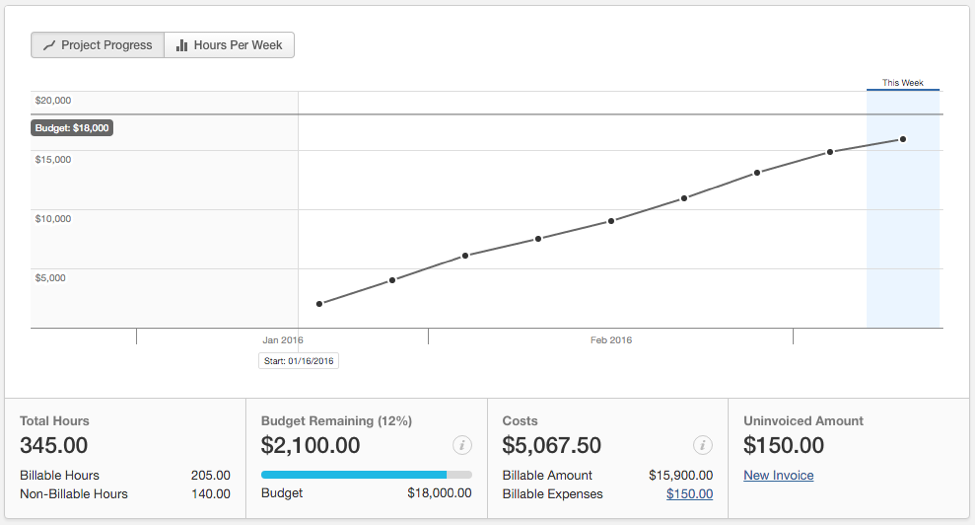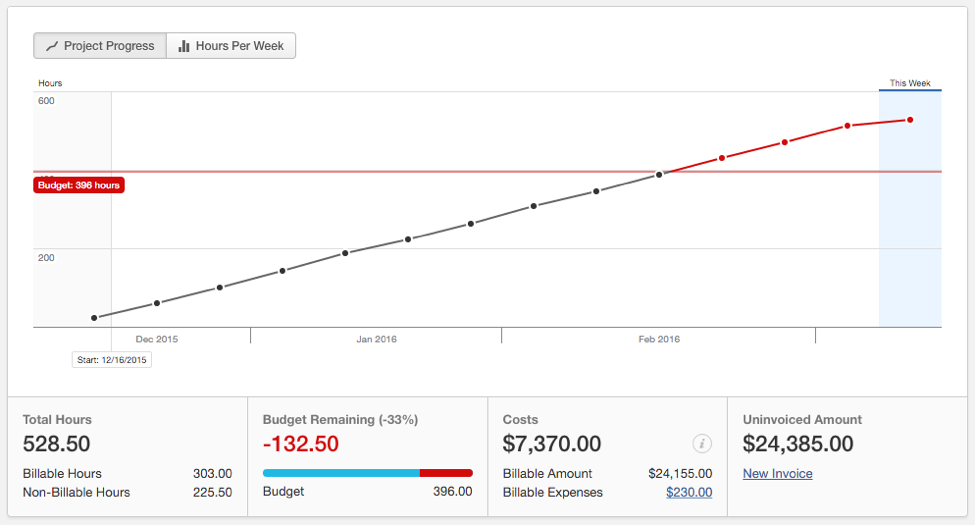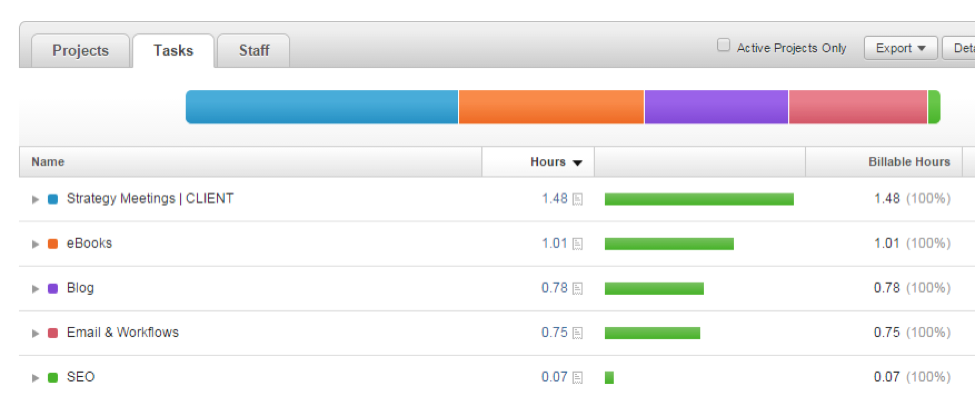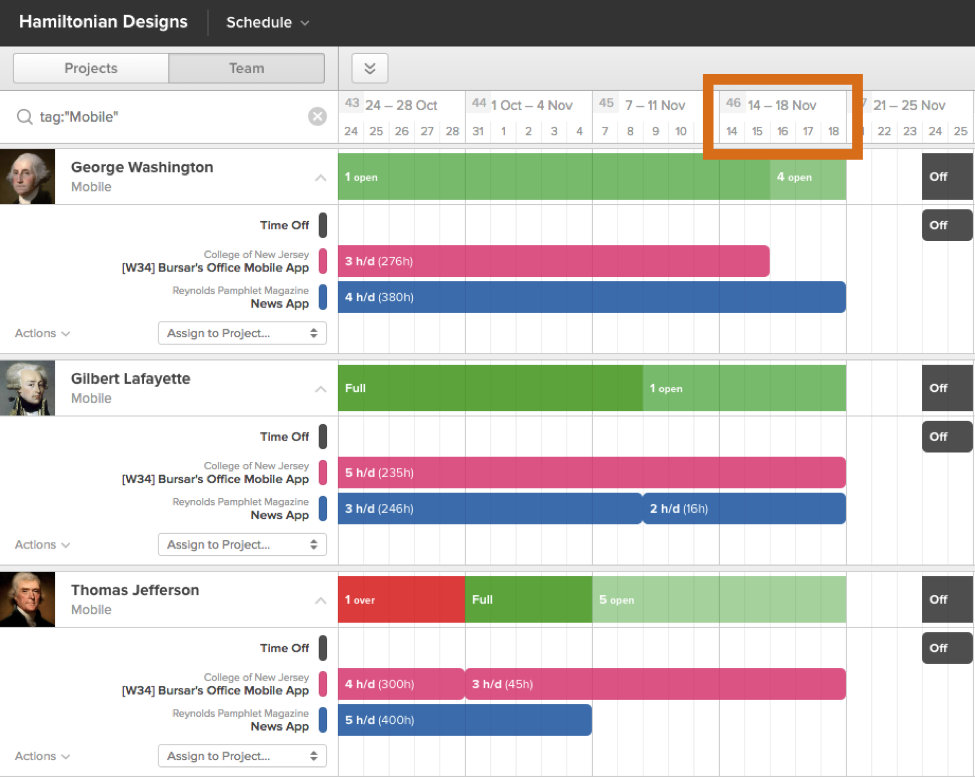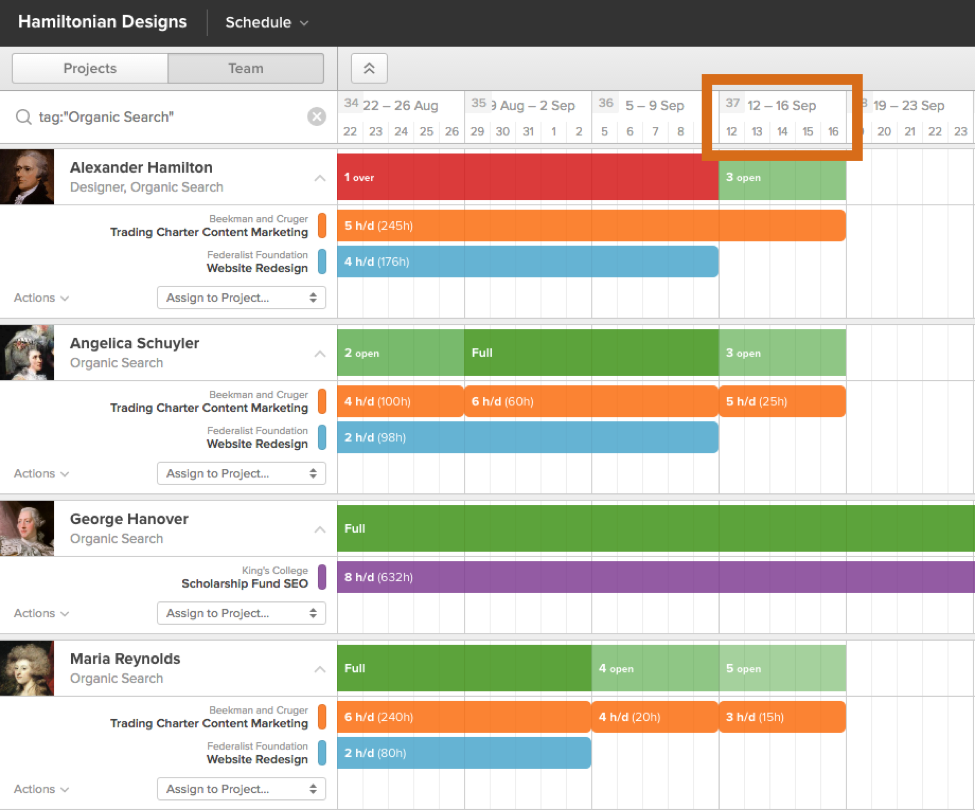Time tracking and team scheduling are two familiar tricks of the trade for project managers and business owners, who rely on them to keep projects on track and keep tabs on the health of the business.
But these tools can also provide a wealth of useful information to account executives and business development managers responsible for winning new business. Here are six ways you can use time tracking and team scheduling to make your sales process even better:
1. Define your ideal client
When your business was first getting off the ground, you probably worked with whoever would hire you as a matter of necessity. But as your business grows, you can afford to adopt a more long-term outlook that may involve turning away some potential clients.
Time tracking lets you figure out which clients are most profitable—and which ones are taking up more time than they should. Once you have this information, you can create a profile of two or three ideal clients based on all the great projects you’ve worked on in the past.
The sales team can then use these client personas to identify and prioritize prospects. This way you avoid typical problem clients and zero in on profitable clients that can help your business grow.
Take a deep dive into past projects and be on the lookout for projects like the one above, which came in well below its budget. Try to pick out commonalities between your profitable projects to craft your ideal client persona. Harvest users can access this graph in the Projects section.
On the other hand, keep an eye out for projects like this one, which ran over budget. If you can find common traits among projects like this you can identify red flags in potential clients.
2. Update your pricing
As your business grows and you get better at what you do—and are able to provide more value for your clients—it might be time to update your pricing. Thankfully time tracking can help you do that. Many agencies price projects based on gut feeling or guesstimation. Without knowing how much time is going into each project and task it’s impossible to know if you’re charging the right amount or losing money.
With time tracking you can see exactly which tasks are losing money. Hopefully you’ll be able to update existing contracts to a fair price. More importantly, though, sales teams can amend the contracts they propose to prospective clients.
Make sure you track how much time your products and services take. This will let you figure out exactly how much it costs your agency to produce an e-book or conduct an audit, for example. Then you can price your services based on how much they actually cost your business. Harvest users find this graph by going to Reports > Time.
3. Improve estimates
It’s hard to come up with an accurate estimate for how long a project will take—and how much it will cost—without knowing how long you spent on previous projects of a similar scope. And inaccurate estimates can leave you in the red or dealing with an irate client.
Make sure you have easy access to historical data that will tell you exactly how long previous projects took, how much they cost, and what your margins were. If a similar project went smoothly, you can use those numbers as your estimate without making changes. And if you were way off on that project, you can correct course on the new one you’re pitching.
What about projects that aren’t similar to something you’ve done in the past? If you can break them down into parts that you have worked on in the past, you can see how long it took to complete each of those tasks and use those numbers in your estimate.
4. Back up sales pitches with hard numbers
If there’s one thing people like these days it’s data. Time tracking allows you to put hard data behind proposals for prospective clients. If a prospect pushes back on a price you’ve quoted for them, you can back it up with the numbers from a similar project. This will reassure them you aren’t just price gouging, that there are good reasons for your pricing structure to be the way it is.
Time tracking can also be helpful when deciding on a project timeline. History can serve as your guide for how long a potential project will take to complete. With time tracking you can see exactly how many hours went into it, allowing you to present a detailed project timeline to your prospects.
5. Balance new business and team availability
There’s nothing worse than landing a great new lead only to discover the team is already under water, or that a different team is twiddling their thumbs because they’re short on work.
Team scheduling lets you know what kind of business you should work on winning. A good solution will let you see exactly what everyone in the company will be working on weeks and even months down the road.
If you filter people by the team they work on, you can easily see what kind of business you need to win.
Take this mobile team, for example. They’ll be busy until the middle of November. You can put winning new mobile clients on the back burner for now.
With the exception of one long-term project, this organic search team is only busy until mid-September. This means winning new organic clients should be a high priority.
With Harvest Forecast you can easily filter employees based on what team they work on, letting you see which teams need work and when they can take on new business.
6. Project future revenue
Accurate team scheduling also allows you to get a rough idea of how much revenue your business can expect to bring in over the next few months. This can help focus your sales efforts, letting you know if you just need to land a few small projects or a white whale. You can get a sense of when to ramp up sales and marketing efforts or launch a major new campaign. And if you have more work than your team can handle, it might be time to expand your staff!
Improving your sales process is only one way your business can benefit from getting an accurate handle on your time. Learn more about Harvest to discover the power of intuitive time tracking. And check out Harvest Forecast for a visual resourcing solution that lets you plan for the future.












